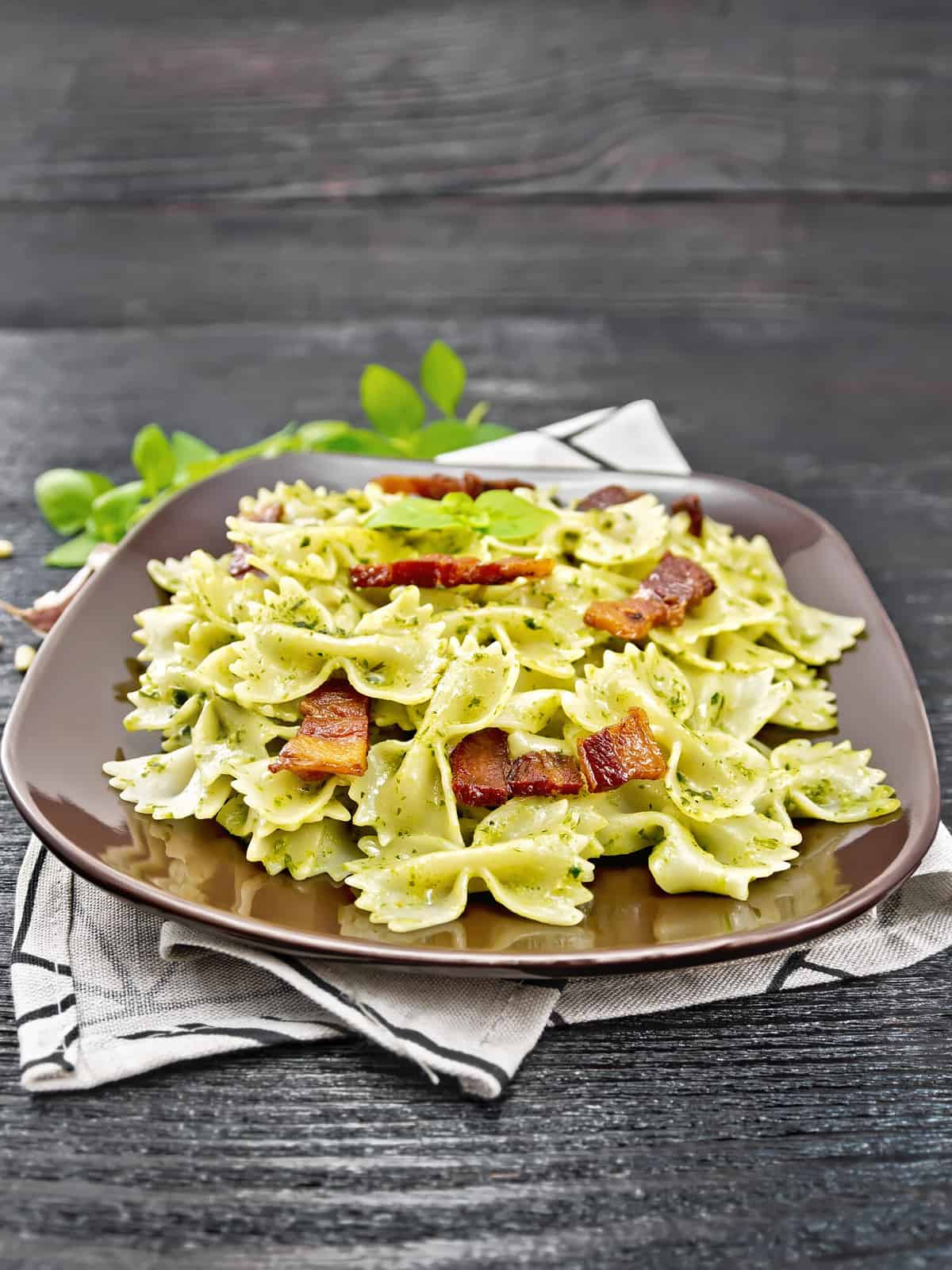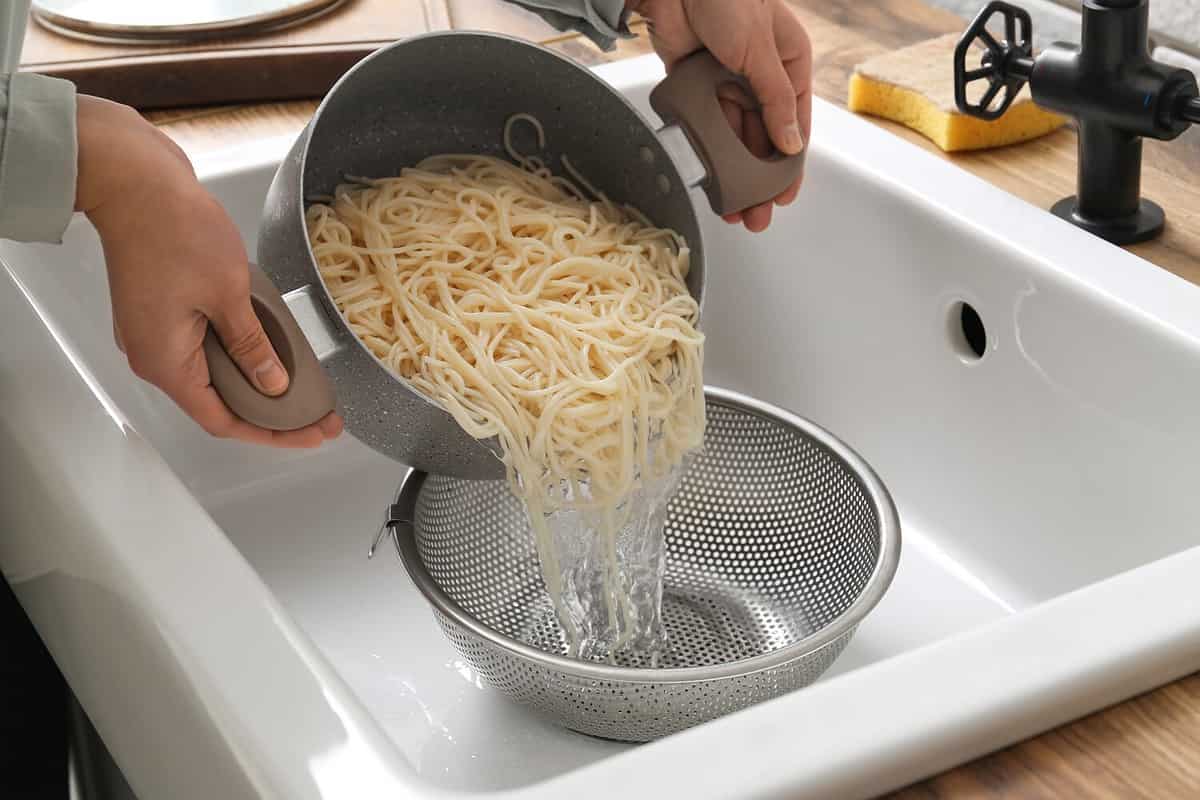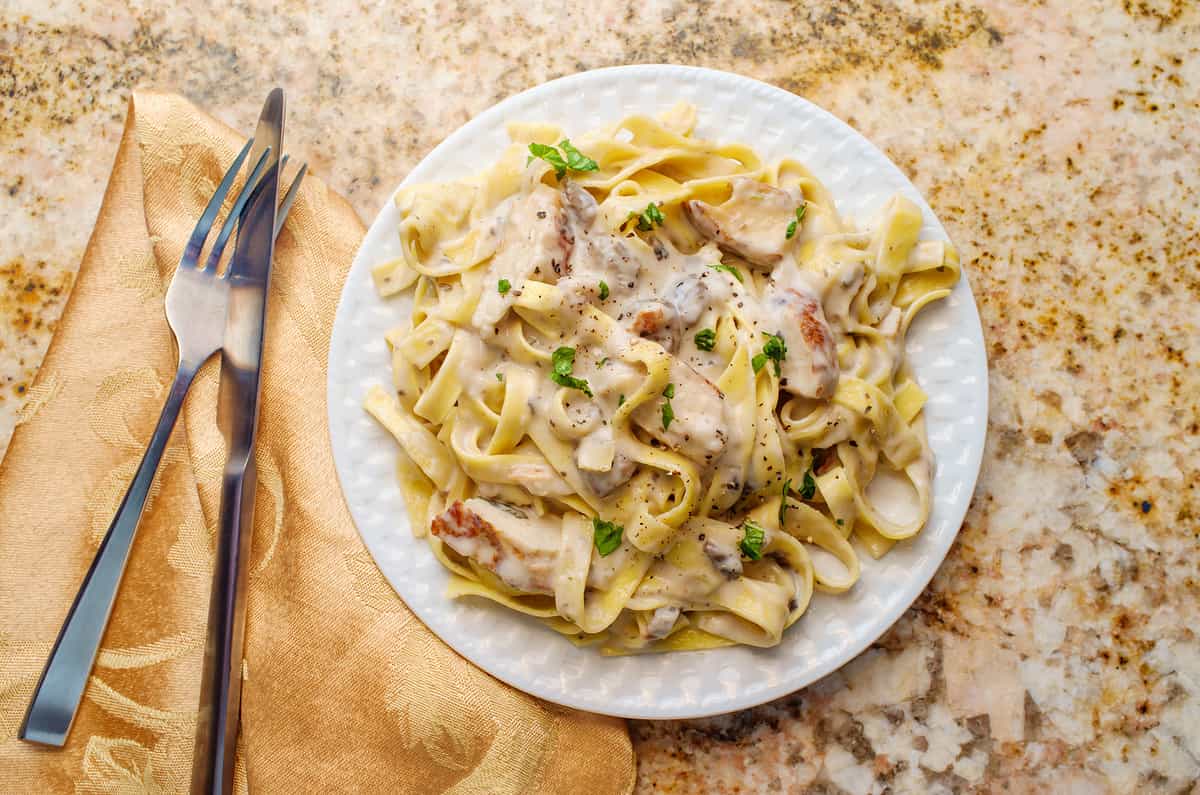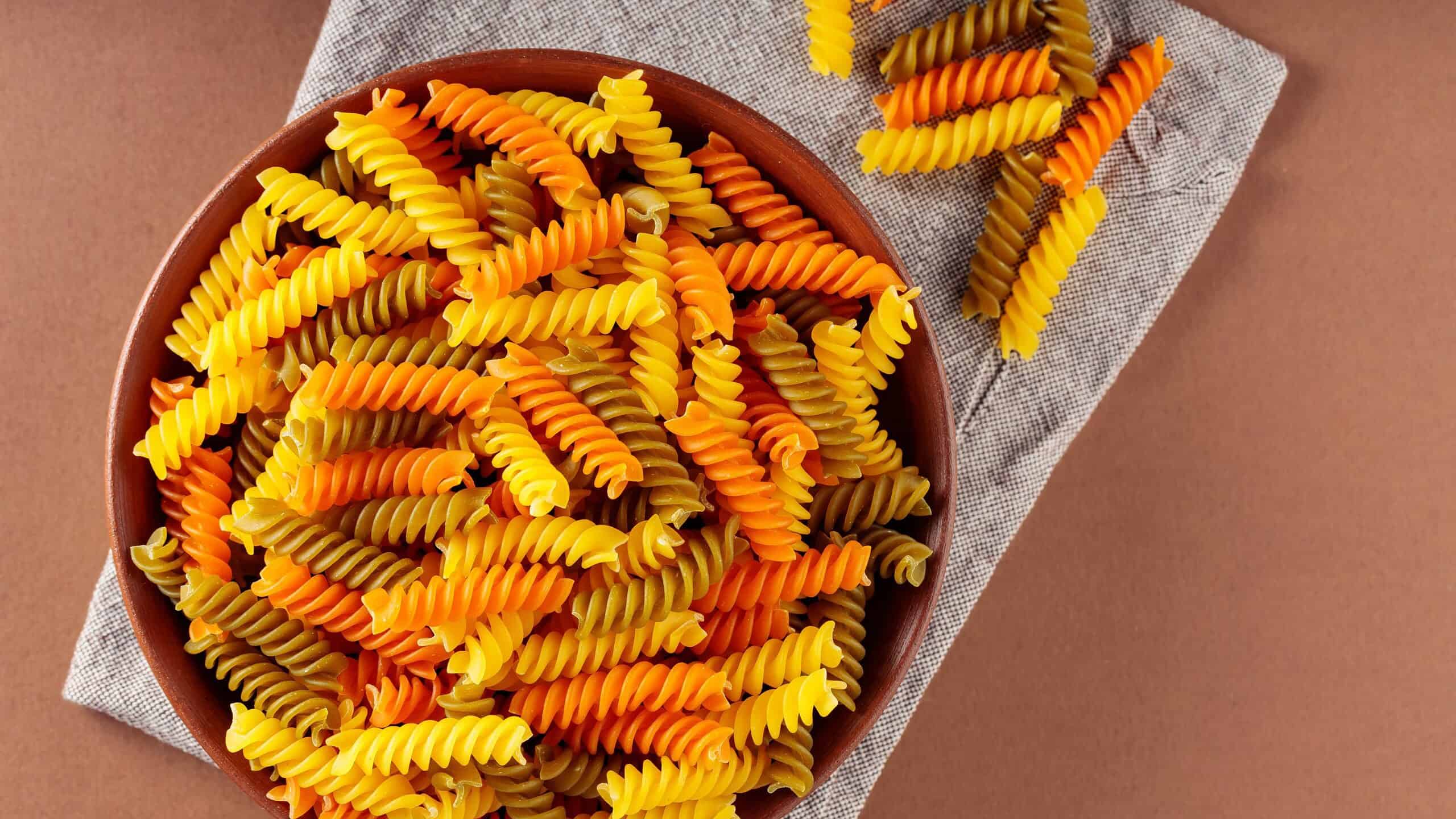Pasta is a staple for weeknight dinners across the world. It is easy to make and versatile, allowing you to adapt the recipes to create something you love! Although the back of the box of pasta gives universal instructions, there are a few different ways to cook this familiar food. This article will explore the traditional cooking method and a few alternatives to try the next time you cook pasta!
What is Pasta?
Pasta has been around for centuries. Additionally, it is a noodle that can come in all different shapes and sizes. Pasta is comprised of a type of flour or durum wheat, eggs, and water. It can also be made from rice, buckwheat, or barley. There are even refined pasta and whole grains.
The type of pasta you eat, whether whole wheat or refined and enriched, will determine the overall health benefits that you will receive.
The pasta that is eaten by the majority of people is refined. This pasta has a mild flavor and is easy to cook. However, since it is refined, it has had much of its nutrients taken out. Whole grain, on the other hand is the healthier option. It has more fiber, which will leave you feeling fuller for longer. Some studies show whole grains can benefit heart health and lower the risk of certain cancers and diabetes.
However, it is essential to remember that pasta is higher in carbohydrates, which may have a negative effect on blood sugar.
Pasta is an Italian staple that pairs well with diverse sauces and meats. Its versatility is one of the reasons so many people love it!
Types of Pasta
Pasta is not a one-size-fits-all. There are many variations! Therefore, below are several types of pasta you may see at the grocery store:
- Spaghetti
- Penne
- Orzo
- Fettuccine
- Macaroni
- Tortellini
- Angel hair
- Ravioli
- Lasagna
- Rigatoni
- Tagliatelle
- Farfalle
- Bucatini
- Ditalini
- Egg noodles
- Gemelli
- Gnocchi
Each type of pasta serves a specific purpose. For example, spaghetti noodles are traditionally enjoyed in spaghetti, while lasagna is specifically for lasagna.
While there are many recipes you can make with the numerous noodles out there, typically, there is a basic method to cooking pasta: boiling it in water. Although the boiling time may change, the methods are usually the same.

©kostrez/Shutterstock.com
How to Cook Pasta, Perfectly
Knowing how to make pasta is one of the first cooking methods a person learns. It is easy enough that any beginner can pick up the techniques quickly. However, did you know there is more than one way to cook pasta? There are also simple tips to help you ensure your pasta comes out less sticky, clumpy, and ready to be added to any delicious dish!
Tips to Know Before Cooking Pasta
- Ensure your pot is big enough to accommodate plenty of water and the pasta.
- Remember to stir your pasta every couple of minutes. This will keep it from sticking and clumping together.
- One tablespoon of salt per pound of pasta will season the water and pasta.
- Use plenty of water. Around four quarts is typical.
- Drain the pasta from the cooking water immediately; this keeps the pasta from overcooking, making it too mushy.
- Washing the pasta after cooking removes the starch you want in your recipes! So, do not wash if you can help it.
- Putting olive oil in cooked pasta keeps it from sticking.
How to Cook Pasta Using the Traditional Method
The traditional method of cooking pasta is written on the back of all the pasta boxes. It includes boiling the water, adding the pasta, and cooking for a set amount of minutes. Most of the time, the pasta will come out amazingly and perfectly, ready to add to any dish.
If you prefer the traditional cooking method, follow these instructions:
- First, boil three to four quarts of water on the stovetop.
- While waiting for the water to boil, add in salt, being sure to be generous; this is the one time you will be seasoning the noodles; therefore, the more salt you use, the better. The consensus is to use one tablespoon of salt per pound of pasta.
- Once the water is boiling, add your pasta choice and cook for as long as the instructions state. You can also taste the pasta as you boil it to determine the level of doneness.
- The amount of time cooke will vary between each type of pasta. If you prefer softer than al dente, cook for a few minutes longer than suggested.
- Drain the pasta right away from the water. Do not rinse.
- Add pasta to the recipe's sauce, or add olive oil if you will not use it immediately to keep it from sticking. Enjoy with any dish!

©Pixel-Shot/Shutterstock.com
How to Cook Pasta Using the Roasting Method
The roasting method is not quite as popular as the traditional method. For starters, it takes a bit longer and more legwork. However, the result will be pasta that tastes earthy and more flavorful.
If you would like to try the roasting method, follow the instructions below:
- Preheat the oven to 350 degrees Fahrenheit.
- While you wait, place the pasta on a baking sheet in an even layer.
- Place the pasta in the oven and toast for 10 to 15 minutes. For smaller pasta, keep an eye on it, being sure not to over toast.
- The pasta will be a darker brown with a golden hue.
- Remove the pasta from the oven and allow it to cool.
- Once the pasta is completely cool, place it in a ziplock bag, add cool water, and push all the air out.
- Then, place the bag of pasta and water in the refrigerator for at least two and a half hours. This step will rehydrate the pasta, allowing it to be al dente.
- Alternatively, you can cook the pasta after roasting for 15 minutes longer than the package instructions.
The results of roasted pasta are, well, different than traditional pasta. It has a more robust and earthy flavor, yet the texture is not quite as soft, and since the flavor is stronger, simple recipes that do not have a ton of flavor are perfect for eating this pasta with.
How to Cook Pasta With Cold Water
Many of us have always heard, do not boil your pasta in cold water! It won't cook through, and the texture is not the same. While it is true that the texture of pasta that cooks in cold water versus hot water is a bit different, it is possible and also a preferred method by many. Some would choose this method over others for a couple of reasons. First, it takes less time than the traditional method, and since the noodles cook with cold water, the electricity or gas used to cook the pasta will be less.
If you want to give this cooking method a try, follow the instructions below:
- Put the pasta, water, and salt in a large pot together and place on the stovetop.
- Bring the pasta and water to a boil over medium-high heat while covered.
- Once the water comes to a boil, reduce the heat to a simmer and continue to cook for four to five minutes to reach al dente.
- If you would like your pasta softer, cook for a few minutes longer.
- Remove from the heat and drain immediately.
- Do not rinse.
- Add to your favorite recipe!
How to Cook Pasta With Milk
While cooking pasta with water is the go-to method, a different liquid can increase creaminess and flavor. This method will work best when you cook pasta with a creamy sauce.
Follow the instructions below to cook your pasta in milk:
- Heat milk over the stovetop in a large pan. Continue to stir, ensuring that the milk does not burn. You can add salt or other seasonings to the milk at this time.
- Bring the milk to a boil.
- When the milk boils, reduce the heat to a low simmer and add the pasta.
- Cook the pasta per the instructions on the back, but be sure to stir every couple of minutes so you do not burn the milk and keep the pasta from sticking together.
- When the pasta is done cooking, remove from heat, drain, and add to the sauce of your choice.

©iStock.com/EzumeImages
How to Cook Pasta With Broth
Cooking pasta in a broth will add flavor to the noodles. This is especially beneficial if the recipe does not have a ton of flavor and seasoning. It is also a great way to cook simple pasta dishes, like elbow macaroni or egg noodles, as a tasty lunch for your kids.
Follow the instructions below to cook pasta with broth:
- Bring your choice of broth to a boil; use around the same amount of water you would use.
- Add salt.
- Once the broth is boiling, reduce the heat and add the pasta.
- Stir every couple of minutes, following the time labeled on the instructions.
- Remove the pasta from the heat when it has reached your desired doneness.
- Drain immediately; do not rinse.
- Serve with your favorite dish, or eat on its own!
Pasta Recipes to Try This Week
- Pesto Broccoli Pasta Recipe
- Bacon Tomato Pasta Recipe
- Bacon Cheeseburger Pasta Recipe
- Greek Style Pasta Recipe
- Mediterranean Chicken and Pasta Recipe
- Italian Chicken with Pasta Recipe
- Scalloped Chicken and Pasta Recipe
Pasta Comparison and Health Posts
- Rigatoni vs. Penne: 3 Differences & Can You Substitute Them?
- Ziti vs. Penne: 3 Key Differences & When to Use Each Noodle
- Is Ramen Healthy, Actually? What Science Says
- Glass Noodles vs. Rice Noodles: Differences, Nutrition, and More
- Egg Noodles vs Pasta: 5 Key Differences & Nutritional Comparison
In Conclusion
Pasta is a versatile and delicious staple that many people love. It is adaptable and can be added to so many different dishes! Although the traditional method of cooking pasta is popular and straightforward, there are a few other ways to cook pasta. Try one of these new methods this week and see which one you enjoy the most.
The image featured at the top of this post is ©Lazartivan/Shutterstock.com.
